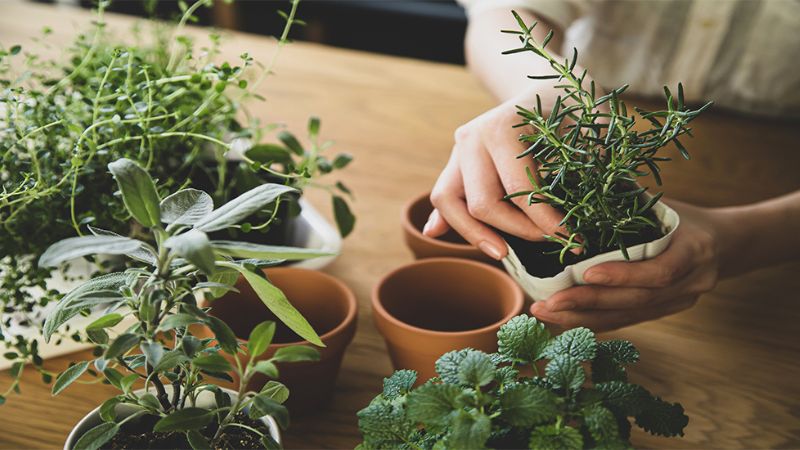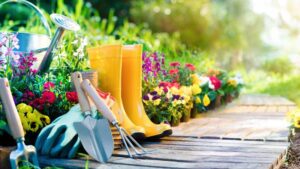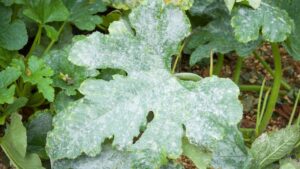In the hustle and bustle of urban living, cultivating your own herb garden might seem like an impossible dream. However, with a little creativity and know-how, even the tiniest of spaces can transform into flourishing herb havens. Welcome to our guide on herb gardening in small spaces, where we’ll delve into 9 Tips For Herb Gardening in Small Spaces to make the most out of limited square footage. From vertical gardens to compact containers, we’ll explore innovative solutions that allow you to enjoy fresh herbs right at your fingertips. Whether you’re a seasoned gardener or a novice with a green thumb, these strategies will help you create an aromatic oasis in your urban jungle.
9 Tips For Herb Gardening in Small Spaces
1. Choose the Right Herbs
When gardening in limited spaces, it’s crucial to select herbs that will thrive in such conditions. Opt for compact varieties that don’t require extensive root systems or sprawling growth. Herbs like basil, thyme, chives, and parsley are excellent choices for small gardens. These herbs not only adapt well to confined spaces but also offer versatility in culinary use, making them ideal for home cooks.
2. Utilize Vertical Space
Maximize your gardening area by going vertical. Vertical gardening allows you to grow herbs upwards, utilizing walls, trellises, or hanging baskets. Install vertical planters or create your own using recycled materials like pallets or shoe organizers. By utilizing vertical space, you can grow a variety of herbs without taking up valuable ground space.
3. Container Gardening
Containers are a fantastic solution for herb gardening in small spaces. Choose pots or containers that are appropriately sized for your herbs and ensure they have adequate drainage. Place containers strategically around your space, such as on balconies, windowsills, or even vertically on walls. Remember to use high-quality potting soil and water regularly to keep your herbs healthy.
4. Companion Planting
Implement companion planting techniques to maximize your herb garden’s potential. Certain herbs, when planted together, can benefit each other by repelling pests, improving soil quality, or enhancing flavor. For example, planting basil near tomatoes can help deter pests and enhance the tomatoes’ flavor. Research companion planting combinations to optimize your herb garden’s health and productivity.
5. Trim and Prune Regularly
In small spaces, it’s essential to keep your herbs well-maintained through regular trimming and pruning. This not only encourages healthy growth but also prevents overcrowding. Remove any dead or yellowing leaves, and trim back overgrown branches to promote bushier, more robust plants. Regular maintenance will help your herbs thrive and ensure a bountiful harvest.
6. Provide Adequate Sunlight
Most herbs require plenty of sunlight to flourish, so ensure your small garden receives adequate light. Place your herbs in sunny spots where they can receive at least six hours of sunlight per day. If natural light is limited, consider supplementing with grow lights to provide the necessary light spectrum for healthy growth.
7. Water Wisely
Proper watering is essential for herb gardening success, especially in small spaces where soil can dry out quickly. Water your herbs deeply and consistently, allowing the soil to dry slightly between waterings to prevent root rot. Be mindful not to overwater, as this can be detrimental to your herbs’ health. Consider using self-watering containers or drip irrigation systems to help maintain optimal soil moisture levels.
8. Fertilize Regularly
Keep your herbs well-fed by fertilizing them regularly throughout the growing season. Choose a balanced, water-soluble fertilizer and apply according to the manufacturer’s instructions. Avoid over-fertilizing, as this can lead to nutrient imbalances and damage your plants. Organic options like compost tea or fish emulsion are excellent choices for providing essential nutrients to your herbs without the risk of chemical buildup.
9. Harvest Strategically
Harvest your herbs strategically to encourage continued growth and prolong the harvesting season. As a general rule, never harvest more than one-third of the plant at a time, especially with leafy herbs like basil or parsley. Harvest herbs in the morning when their essential oils are most concentrated for optimal flavor. Regular harvesting not only ensures a steady supply of fresh herbs but also promotes healthy, vigorous growth throughout the season.
Conclusion
In conclusion, herb gardening in small spaces is not only feasible but also incredibly rewarding. By implementing the tips outlined above, you can create a flourishing herb garden even with limited square footage. Whether you choose to utilize vertical space, container gardening, or companion planting techniques, there are numerous ways to maximize your herb-growing potential. Remember to provide adequate sunlight, water, and nutrients while maintaining regular trimming and pruning to ensure healthy growth. With a little creativity and dedication, you can enjoy a bounty of fresh herbs right at your fingertips, enhancing your culinary creations and bringing a touch of green to your urban oasis. Happy gardening!
FAQs
Can I grow herbs indoors?
Yes, many herbs thrive indoors if provided with adequate light and proper care. Choose a sunny windowsill or invest in grow lights to ensure your indoor herb garden flourishes.
What are the best herbs for small spaces?
Herbs like basil, parsley, chives, thyme, and mint are excellent choices for small gardens due to their compact growth habits and versatility in culinary use.




